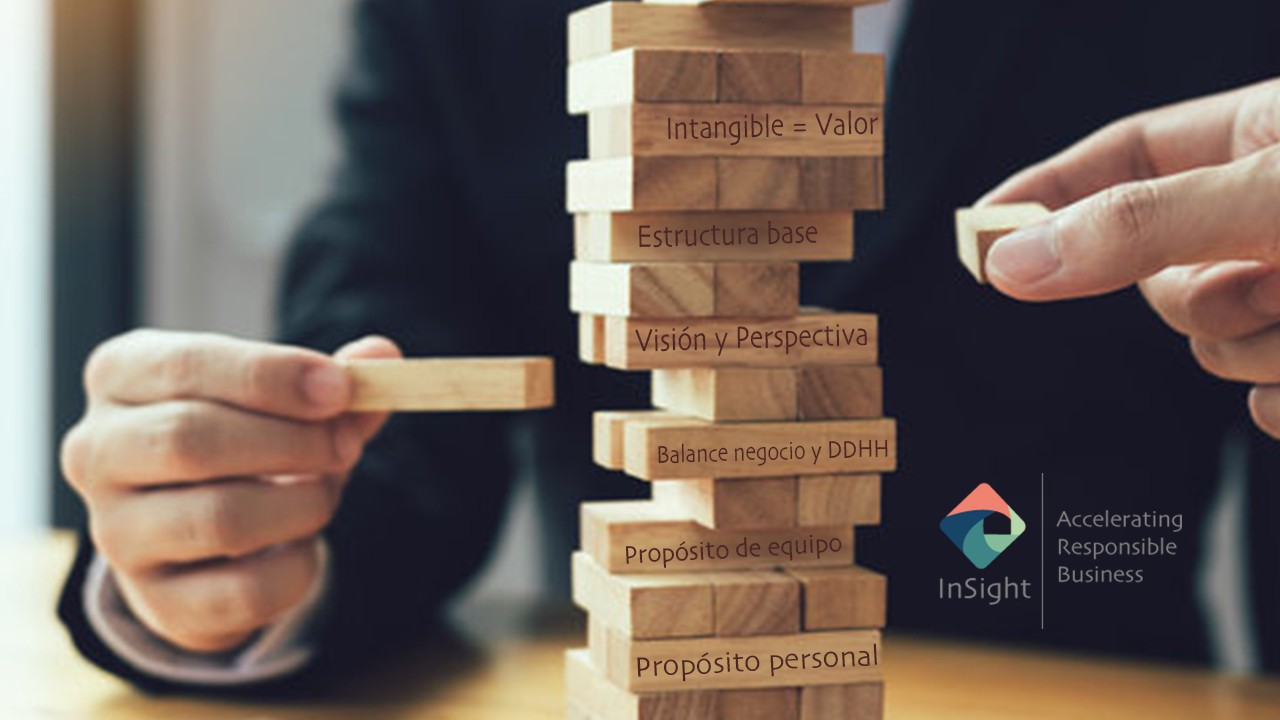How to build social sustainability and not get exhausted in the attempt?
Another way to outline this question is how to approach social performance management to make it truly sustainable? When we think about long-term projects, we must think about three key aspects that we mentioned in our previous article: teams, integration and a co-created roadmap. This is a dynamic process, which is constantly being built. Therefore, it requires a commitment from the company to consolidate it as a fundamental part of the business strategy.
- The starting point is to find the purpose, beginning with the human being. In this work, we address the baggage of elements (values, convictions, beliefs, knowledge) that move that professional and that he/she wants to contribute to the work team. In this work, we identify the points that connect the person with the social team, in order to build a group purpose. In turn, we analyze and identify the coincidences between the vision of the social team and the vision of the business, so that social performance is part of the company's higher purpose and, therefore, of its way of being.
- One of the greatest challenges we face in managing social performance is to achieve a balance between business sustainability and respect for people's rights, and when we say this, we are not only referring to respecting human rights (by not doing), but also to promoting the exercise of rights in the different stakeholders and, especially, in the communities where the project or operation is located. It is a matter of articulating and integrating the rights of the organization and those who share the territory and, therefore, are impacted in some way. Such is the case of prior consultation, which is sometimes seen as an obstacle by the companies, but becomes the appropriate space to promote participation, dialogue and understanding with the communities.
- The next element is closely related to the previous one, since companies that seek to be sustainable must understand that social issues are not on the other side of the business, that it is not the world we see outside the mesh. It is necessary to overcome this vision and understand that the company is part of the context, is part of the environment, and that both the company and the community are part of the problem and part of the solution. When the perspective and mentality are changed, dialogue processes are facilitated through which the field of vision opens up even more to the environment, which in turn feeds and feeds back into social action plans. If we may use the analogy, it is a dynamic where the soil is cultivated, fertilized permanently and harvests are reaped that are beneficial to all.
- In order to achieve a change of perspective and vision, the company must have some minimum elements, a base that allows it to undertake its social process. Elements that provide a clear structure such as a social performance plan, defined policies, standards, identification and relationship plan with stakeholders, among others, which is essential to begin to navigate in the social area and achieve a long-term vision.
- The intangible generates great value. Social performance and the promotion of human rights bring economic value to the business. In fact, there are Human Rights indicators that impact or influence the value of the company in the stock market. At InSight, we help companies to address the steps to be taken in relation to these indicators, advancing actions in the following areas:
- Structuring and training of the social team.
- Analysis of the company's social performance.
- Initial assessment against indicators
- Gap analysis (to identify gaps) and improvement plan.
The indicators exist. It is time to start knowing them and applying them.
In our next publications on social networks, we will explain some of the indicators that have the greatest impact on the value of companies in social and human rights matters. We invite you to follow us on:
Instagram: insight_social_performance
Facebook: InSight Social Understanding


